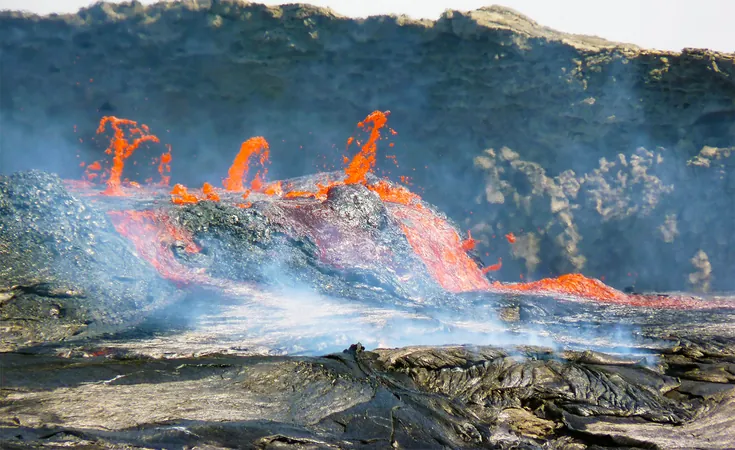
Alarming Increase in On-Screen Violence Sparks Health Warnings from Researchers
2024-12-30
Author: Wai
Introduction
In a startling new study, researchers have identified a significant rise in discussions about homicide in films, raising serious health concerns for audiences both young and old. Over the past fifty years, dialogue involving terms like 'kill' and 'murder' has increased in cinema, suggesting a troubling trend in media violence.
Research Findings
Brad Bushman, a communication professor at Ohio State University and co-author of the research, expressed his astonishment at the extent of this rise, noting that the increase isn't confined to typical crime genres, but permeates various non-crime films as well. This trend has led experts to advocate for heightened media literacy and mindful consumption, particularly to shield vulnerable audiences like children from the pervasive violence.
Concerns for Children
Bushman stated, 'While adults can make informed choices about their viewing habits, my primary concern is the exposure of children to violent media, which can have lasting effects on their behavior and emotional development.' The potential impact of violent media on viewers has long been a contentious topic, with some studies indicating a link between violent media exposure and aggressive behavior in children. These studies suggest that such exposure could lead to increased antisocial behavior and emotional distress among youth.
Previous Studies
Notably, a 2020 analysis indicated that the connection between violent video games and actual violent behavior is minimal and suggested that a viewer's predisposition to aggression plays a significant role in how they may respond to media violence.
Study Scope and Data
Published in the journal *JAMA Pediatrics*, Bushman and his research team analyzed dialogue from an impressive 166,534 English-language films produced between 1970 and 2020. This data was sourced from OpenSubtitles.org. Their findings revealed that nearly 7% of the movies included verbs rooted in 'kill' or 'murder.' In a conservative estimate, they omitted contexts where these words were used in questions, negations, or passively, excluding other violent terms like 'shoot' or 'stab.'
Increase in Violent Dialogue
The increase in the use of these murderous verbs was notable: in the early 1970s, only 0.21% of dialogue contained references to killing or murder, versus 0.37% by 2020. Furthermore, the rise was observed across all genres and for both male and female characters, though female characters only showed an increase in non-crime films.
Rising Gun Violence
The researchers also drew parallels with previous findings that indicated a more than twofold increase in gun violence depicted in popular films since the 1950s. Bushman raised alarms about these trends, warning that constant exposure to violent media may not only foster aggressive behavior but also desensitize viewers to suffering and pain in real life.
Contrasting Opinions
However, not all experts are convinced of the direct correlation between film violence and real-life health concerns. Peter Etchells, a psychologist and science communicator from Bath Spa University, cautioned against jumping to conclusions. He argued that merely counting 'murderous' words in films, without context regarding their usage, is a significant logical leap and may not warrant widespread alarm.
Conclusion
As the debate continues, the implications of violent media portrayals in films warrant serious consideration, especially with the rising accessibility of movies among impressionable audiences. Understanding the lasting effects of such media consumption may be key to fostering healthier viewing habits in the future.



 Brasil (PT)
Brasil (PT)
 Canada (EN)
Canada (EN)
 Chile (ES)
Chile (ES)
 Česko (CS)
Česko (CS)
 대한민국 (KO)
대한민국 (KO)
 España (ES)
España (ES)
 France (FR)
France (FR)
 Hong Kong (EN)
Hong Kong (EN)
 Italia (IT)
Italia (IT)
 日本 (JA)
日本 (JA)
 Magyarország (HU)
Magyarország (HU)
 Norge (NO)
Norge (NO)
 Polska (PL)
Polska (PL)
 Schweiz (DE)
Schweiz (DE)
 Singapore (EN)
Singapore (EN)
 Sverige (SV)
Sverige (SV)
 Suomi (FI)
Suomi (FI)
 Türkiye (TR)
Türkiye (TR)
 الإمارات العربية المتحدة (AR)
الإمارات العربية المتحدة (AR)